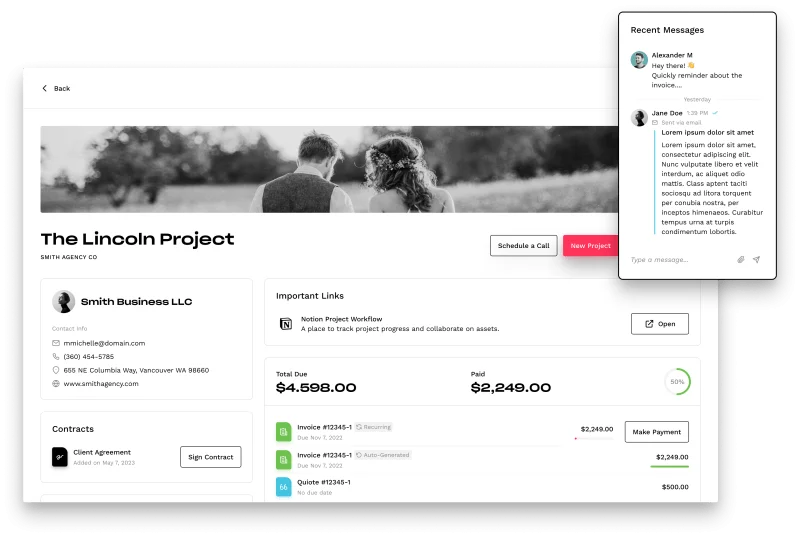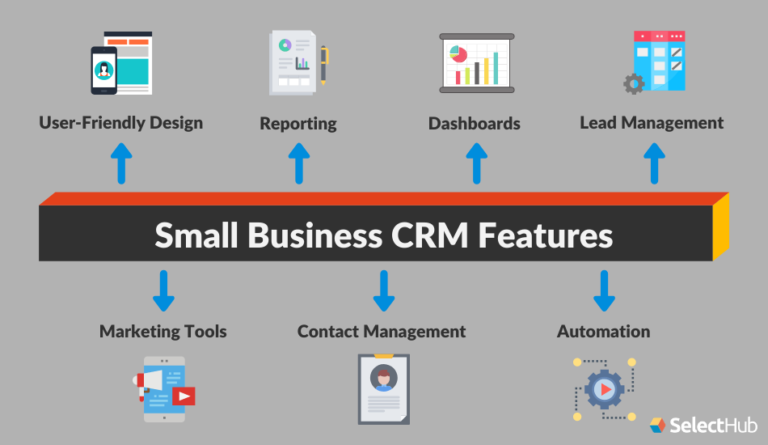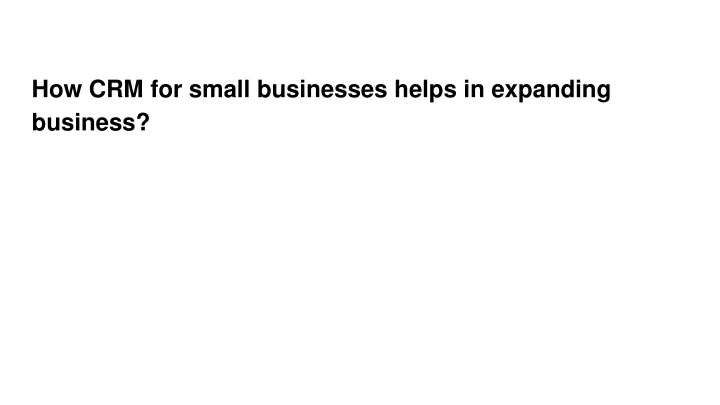
Unlocking Success: The Best CRM Systems for Small Photography Businesses
So, you’re a photographer, pouring your heart and soul into capturing those perfect moments. You’re chasing sunsets, freezing laughter, and telling stories, one click at a time. But let’s be honest, the business side of things? It can feel like a whole different beast. Juggling inquiries, scheduling shoots, sending invoices, and keeping track of client preferences – it’s enough to make even the most passionate photographer feel overwhelmed. That’s where a Customer Relationship Management (CRM) system steps in, becoming your secret weapon to streamline operations and boost your success.
This isn’t just about tech jargon; it’s about reclaiming your time, nurturing your client relationships, and ultimately, growing your photography business. In this comprehensive guide, we’ll delve deep into the best CRM systems specifically tailored for small photography businesses. We’ll explore their features, benefits, and how they can transform your workflow, allowing you to focus on what you love most: creating stunning photographs.
Why Do Small Photography Businesses Need a CRM?
Before we jump into the specifics, let’s address the elephant in the room: why do you even *need* a CRM? You might be thinking, “I’m a small operation; I can manage everything myself.” And while that might be true in the early days, as your business grows, so does the complexity. Without a CRM, you risk:
- Losing track of leads: Missed opportunities because you forgot to follow up? It happens to the best of us.
- Inefficient communication: Endless email chains, scattered notes, and a general lack of organization.
- Poor client experience: Forgetting important details about a client, leading to a less personalized service.
- Wasted time: Manual tasks like sending invoices and scheduling appointments eat into your precious time.
- Difficulty scaling: Trying to manage everything manually becomes unsustainable as your business expands.
A CRM solves these problems by centralizing your client data, automating repetitive tasks, and providing valuable insights into your business performance. It’s like having a virtual assistant that works tirelessly to keep you organized and on top of your game.
Key Features to Look for in a Photography CRM
Not all CRMs are created equal. When choosing the right one for your photography business, consider these essential features:
1. Contact Management
This is the foundation of any good CRM. It allows you to store and organize all your client information in one place. Look for features like:
- Detailed contact profiles: Capture names, contact information, shoot details, preferences, and more.
- Segmentation: Group clients based on their needs, shoot types, or location.
- Custom fields: Tailor the CRM to your specific needs by adding custom fields like “favorite locations” or “preferred photography styles.”
2. Lead Management
Track potential clients from initial inquiry to booking. Features to look for include:
- Lead capture forms: Integrate forms on your website to automatically add leads to your CRM.
- Lead scoring: Identify your most promising leads based on their engagement and activity.
- Pipeline management: Visualize the stages of your sales process and track the progress of each lead.
3. Scheduling and Calendar Management
Simplify appointment scheduling and avoid double-bookings. Key features include:
- Appointment scheduling: Allow clients to book appointments directly through your CRM or a linked calendar.
- Calendar syncing: Integrate with your existing calendar (e.g., Google Calendar, Outlook) to keep everything in sync.
- Automated reminders: Send automated appointment reminders to reduce no-shows.
4. Email Marketing and Automation
Stay connected with your clients and nurture leads with automated email campaigns. Look for:
- Email templates: Create professional-looking email templates for various purposes (e.g., welcome emails, follow-up emails, promotional offers).
- Email automation: Set up automated email sequences based on triggers (e.g., new lead, booked appointment).
- List segmentation: Send targeted emails to specific client segments.
5. Invoicing and Payments
Streamline the billing process and get paid faster. Features to consider include:
- Invoice creation: Generate professional invoices with your branding.
- Payment processing: Integrate with payment gateways (e.g., Stripe, PayPal) to accept online payments.
- Automated payment reminders: Send automated payment reminders to clients.
6. Workflow Automation
Automate repetitive tasks to save time and improve efficiency. Look for features like:
- Automated workflows: Create automated workflows for tasks like sending welcome emails, following up with leads, and sending thank-you notes.
- Task management: Assign tasks to yourself or your team members and track their progress.
7. Reporting and Analytics
Gain valuable insights into your business performance. Features to look for include:
- Sales reports: Track your revenue, expenses, and profit margins.
- Lead source tracking: Identify the sources of your leads to optimize your marketing efforts.
- Client activity tracking: Monitor client engagement and identify opportunities for improvement.
8. Integration Capabilities
Ensure the CRM integrates with other tools you use, such as:
- Email marketing platforms: (e.g., Mailchimp, Constant Contact)
- Social media platforms: (e.g., Facebook, Instagram)
- Accounting software: (e.g., QuickBooks, Xero)
- Website builders: (e.g., WordPress, Squarespace)
Top CRM Systems for Small Photography Businesses
Now, let’s dive into some of the best CRM systems specifically designed for photographers. We’ll consider their features, pricing, and ease of use to help you find the perfect fit.
1. Dubsado
Best for: Photographers who want a fully integrated solution with a focus on automation.
Dubsado is a popular choice among photographers, and for good reason. It’s a comprehensive CRM that offers a wide range of features, including:
- Lead capture forms: Create custom forms to capture leads from your website.
- Contracts and proposals: Generate professional contracts and proposals with e-signatures.
- Invoicing and payment processing: Manage invoices and accept payments through Stripe and PayPal.
- Workflow automation: Automate tasks like sending emails, scheduling appointments, and sending questionnaires.
- Client portal: Provide a dedicated portal for clients to access contracts, invoices, and other documents.
Pros:
- Highly customizable and flexible.
- Extensive automation capabilities.
- Client portal for a professional client experience.
- Excellent customer support.
Cons:
- Can have a steeper learning curve due to its extensive features.
- Pricing can be higher than some other options.
Pricing: Dubsado offers a free trial and various paid plans based on the number of clients you manage.
2. HoneyBook
Best for: Photographers who value ease of use and a visually appealing interface.
HoneyBook is another well-regarded CRM specifically designed for creative entrepreneurs. It’s known for its user-friendly interface and focus on collaboration. Key features include:
- Lead capture forms: Capture leads through customizable forms.
- Proposals and contracts: Create and send proposals and contracts with e-signatures.
- Invoicing and payment processing: Manage invoices and accept payments through Stripe.
- Project management: Organize projects and collaborate with clients.
- Mobile app: Access your CRM on the go.
Pros:
- Intuitive and user-friendly interface.
- Visually appealing design.
- Excellent project management features.
- Strong focus on collaboration.
Cons:
- Less customization compared to Dubsado.
- Limited automation capabilities.
- Pricing can be higher than some other options.
Pricing: HoneyBook offers a free trial and various paid plans based on the number of projects you manage.
3. 17hats
Best for: Photographers seeking an affordable and feature-rich CRM.
17hats is a versatile CRM that offers a solid set of features at a competitive price point. It’s a great option for photographers who want a comprehensive solution without breaking the bank. Key features include:
- Lead capture forms: Create custom forms to capture leads.
- Contracts and proposals: Generate and send contracts and proposals.
- Invoicing and payment processing: Manage invoices and accept payments.
- Workflow automation: Automate tasks like sending emails and scheduling appointments.
- Time tracking: Track your time spent on projects.
Pros:
- Affordable pricing.
- Comprehensive feature set.
- Good automation capabilities.
- Time tracking feature.
Cons:
- Interface may not be as visually appealing as some other options.
- Customer support can be slow at times.
Pricing: 17hats offers various paid plans based on the number of clients and features you need.
4. Pixifi
Best for: Photographers focused on scheduling and booking management.
Pixifi is a CRM that specializes in scheduling and booking management. It’s a great choice if you need a robust system for managing your calendar and appointments. Key features include:
- Online booking: Allow clients to book appointments directly through your website.
- Calendar management: Sync with your existing calendar and manage your schedule.
- Client management: Store and organize client information.
- Invoicing and payment processing: Manage invoices and accept payments.
- Workflow automation: Automate tasks related to scheduling and booking.
Pros:
- Strong scheduling and booking features.
- User-friendly interface.
- Automated appointment reminders.
Cons:
- Fewer features compared to other all-in-one CRMs.
- Less focus on lead management and marketing.
Pricing: Pixifi offers various paid plans based on the number of events and clients you manage.
5. Sprout Studio
Best for: Photographers looking for a CRM with a strong focus on client galleries and proofing.
Sprout Studio is a CRM that offers a unique focus on client galleries and proofing, making it a great choice for photographers who want to streamline their image delivery process. Key features include:
- Client galleries: Create and share online galleries with your clients.
- Proofing: Allow clients to select their favorite images for printing.
- Lead capture forms: Capture leads through customizable forms.
- Contracts and proposals: Generate and send contracts and proposals.
- Invoicing and payment processing: Manage invoices and accept payments.
Pros:
- Excellent client gallery and proofing features.
- User-friendly interface.
- Focus on the visual aspects of photography.
Cons:
- Less emphasis on automation compared to some other CRMs.
- Can be more expensive than some other options.
Pricing: Sprout Studio offers various paid plans based on the number of clients and features you need.
Choosing the Right CRM: A Step-by-Step Guide
With so many options available, choosing the right CRM can feel overwhelming. Here’s a step-by-step guide to help you make the best decision:
1. Assess Your Needs
Before you start researching, take some time to assess your current workflow and identify your pain points. Ask yourself:
- What tasks take up the most of your time?
- What aspects of your business are you struggling to manage effectively?
- What features are most important to you (e.g., scheduling, invoicing, lead management)?
Knowing your needs will help you narrow down your options and choose a CRM that truly meets your requirements.
2. Define Your Budget
CRM systems come in various price ranges. Determine how much you’re willing to spend on a CRM. Consider both the monthly or annual subscription fees and any potential setup costs. Remember that the cheapest option isn’t always the best, and investing in a more robust CRM can save you time and money in the long run.
3. Research Your Options
Once you know your needs and budget, it’s time to research the different CRM systems available. Read reviews, compare features, and watch demo videos to get a feel for each platform. Consider the following factors:
- Features: Does the CRM offer the features you need?
- Ease of use: Is the interface intuitive and easy to navigate?
- Integrations: Does it integrate with your existing tools?
- Pricing: Is it within your budget?
- Customer support: Does the provider offer good customer support?
4. Take Advantage of Free Trials
Most CRM systems offer free trials. This is a great opportunity to test out the platform and see if it’s a good fit for your business. During your trial, try out different features, upload your data, and see how the CRM integrates with your workflow.
5. Consider Your Long-Term Goals
When choosing a CRM, think about your long-term goals for your photography business. Will the CRM be able to grow with you as your business expands? Does it offer the scalability and flexibility you’ll need in the future?
6. Make a Decision and Get Started
Once you’ve evaluated your options, it’s time to make a decision. Choose the CRM that best meets your needs and fits your budget. Once you’ve signed up, take the time to learn the platform and set it up properly. Import your data, customize your settings, and start using the CRM to streamline your workflow and grow your business.
Tips for Successfully Implementing a CRM
Implementing a CRM is an investment in your business, and to ensure a successful transition, consider these tips:
- Data migration: Plan how you’ll migrate your existing data into the new CRM.
- Training: Take the time to learn the platform and its features.
- Customization: Customize the CRM to match your branding and workflow.
- Integration: Integrate the CRM with your other tools.
- Regular use: Use the CRM consistently to get the most out of it.
- Ongoing support: Seek support from the CRM provider if needed.
The Benefits of a CRM for Photographers: Beyond the Basics
While we’ve covered the core functionalities, the advantages of a CRM extend far beyond basic organization. Let’s explore some of the less obvious, yet equally valuable, benefits:
Enhanced Client Communication
A CRM allows you to personalize your communication at scale. Imagine:
- Sending birthday greetings automatically.
- Tailoring follow-up emails based on client preferences.
- Creating segmented email campaigns for different client types (e.g., weddings, portraits).
This level of personalization fosters stronger relationships, making clients feel valued and understood.
Improved Marketing Efficiency
A CRM can be a powerful marketing tool. By tracking lead sources and client interactions, you can:
- Identify your most effective marketing channels.
- Optimize your marketing spend.
- Create targeted marketing campaigns based on client interests.
This data-driven approach ensures your marketing efforts are efficient and yield a higher return on investment.
Better Financial Management
Many CRMs integrate with accounting software, simplifying your financial management. You can:
- Track invoices and payments.
- Generate financial reports.
- Gain insights into your profitability.
This visibility empowers you to make informed financial decisions and ensure the financial health of your business.
Increased Sales and Revenue
By streamlining your workflow, nurturing leads, and improving client relationships, a CRM directly contributes to increased sales. You can:
- Convert more leads into paying clients.
- Increase your average order value.
- Generate more repeat business.
Ultimately, a CRM is an investment that pays for itself by driving revenue growth.
Time Savings and Productivity Gains
Perhaps the most significant benefit is the time you’ll save. Automating tasks and streamlining your workflow frees you up to:
- Focus on your creative work.
- Spend more time with your family.
- Pursue new business opportunities.
This increased productivity allows you to achieve a better work-life balance and enjoy the fruits of your labor.
Conclusion: Embracing a CRM for Photography Success
In the dynamic world of photography, staying organized, efficient, and client-focused is crucial for long-term success. A CRM system is no longer a luxury; it’s a necessity. By choosing the right CRM and implementing it effectively, you can transform your photography business, streamline your workflow, and cultivate stronger client relationships.
Take the time to evaluate your needs, research your options, and choose the CRM that’s the perfect fit for your business. Embrace the power of automation, client personalization, and data-driven decision-making. With the right CRM in place, you’ll be well-equipped to capture not just beautiful images, but also a thriving and sustainable photography business.
So, what are you waiting for? Start your journey towards a more organized, efficient, and successful photography business today!


